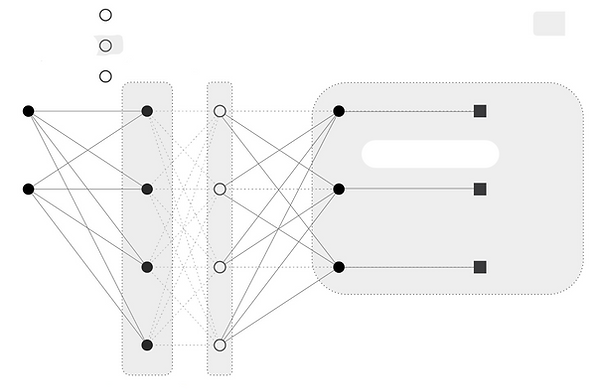The theory is divided into multiple sections that are connected to each other.

Condition 5
The casting and pouring of prime matter result in distinctly different outcomes. The significance and relationship of these processes with the matter depend on how the prime matter is handled and processed.

Prime matter : Concrete
Shaping matter : Negative

Prime matter : Concrete
Shaping matter : Terracotta tile
The casting process, characterized by its additive approach to transmutation, results in an outcome that fundamentally alters the initial form through addition of material. Despite this additive nature, the final product often reflects a subtractive essence, where excess material is removed to reveal the intended shape or structure.

Although the end result might bear superficial similarities, the distinction between alchemical and non-alchemical processes hinges on the methods employed to achieve transformation. Alchemy, in this context, involves not only the physical alteration of materials but also the metaphysical or transformative intent imbued within the process itself. This philosophical underpinning distinguishes it from mere fabrication or construction, emphasizing the intentional and transformative nature of the alchemical journey.

Additive techniques and methods, such as 3D printing, represent an alchemical process where material is systematically layered to form a new substance. In these methods, the prime matter is deposited in successive layers, each building upon the previous one to create a cohesive whole.
This process of gradual accumulation and transformation exemplifies the principles of alchemy, where the base material undergoes a structured and controlled evolution to become a finished product with unique properties and characteristics. Through the precise application of additive techniques, the initial matter is transmuted into a sophisticated and often complex material, showcasing the innovative potential of modern alchemical processes.

Condition 6
In the outcome of casting, in one scenario, the negative that generated the outcome is removed, while in another scenario, the negative becomes integrated as part of the final outcome.

Prime matter : Concrete
Shaping matter : Terracotta pots
Concrete is employed as the foundational prime matter in this process. Initially, terracotta assumes the role of shaping matter, influencing the form and structure during the early stages of production. As the process advances, terracotta seamlessly transitions into becoming an integral part of the final outcome, contributing to the overall composition and outcome.
The negative, initially serving as shaping matter, transitions to become an integral component of the final outcome through its role in defining the structure’s form and characteristics. It represents a transformation from solid mass to an essential void, where the presence or absence of material shapes the overall result and its alchemical nature.


Whether this hollow negative contributes to the alchemical essence of the material depends on its function within the process. Sometimes, the negative remains separate, serving as a distinct outcome in its own right. This duality mirrors the concept of prime matter in alchemy, where foundational elements take different forms depending on their interaction with transformative processes.



The models on the left illustrate various permutations and combinations of negative and positive elements. These outcomes highlight the role of what remains: in some cases, it supports the prime matter, while in others, it becomes an integral part of the final outcome.
Condition 7
What role will shaping matters play in the process?
Beginning with the same prime matter, the focus is on achieving consistent alchemical material as the final outcome. Shaping matters are pivotal in influencing how the prime matter transforms, ensuring that the desired material properties and characteristics are achieved through deliberate and controlled processes. This deliberate manipulation underscores the importance of shaping matters in directing the transformative journey from prime matter to alchemical material.


Prime matter : Concrete
Shaping matter : Negative (space) mould
The model is created using concrete as the prime matter, which undergoes shaping through the combined influences of gravity and a hanging fabric mold. In this process, gravity acts as a natural force that pulls the concrete downward, while the fabric mold, suspended from above, provides a flexible form that guides the concrete into its desired shape. This interplay between the gravitational pull and the contours of the fabric mold results in a unique structure, demonstrating the dynamic relationship between the prime matter and its shaping agents.

Concrete, as the prime matter, is cast using a negative mold of the desired outcome. The negative mold is later burned away to create the void and texture.

Concrete, serving as the prime matter, is poured into a mold fashioned from fabric suspended from above. The concrete conforms to the shape dictated by the hanging and revolving fabric. Once set, the mold is removed to reveal the final outcome.


This involves a combination of casting and pouring. The prime matter is poured into a mold dug into the ground, and once set, the final outcome is pulled out of the mold.
Condition 8
The initial phase of the process utilizes its distinct prime and shaping matter. During this phase, the prime matter is transformed and shaped according to the intended design, resulting in an intermediate outcome.

This intermediate outcome then transitions to become the shaping matter for the subsequent phase of the process. In the second half, this shaping matter interacts with a new prime matter, guiding and influencing its transformation to achieve the final desired result. This two-stage approach emphasizes the dynamic relationship between the different materials and processes involved.
Growth in nature is a distinct and unique process that shapes and forms natural elements, but it cannot be classified as alchemical. However, this natural growth can be controlled and shaped using architectural forms to create materials with alchemical properties.


Each condition explored through the models differs from the others. While the prime matter remained the same, the shaping matter changed in nearly every instance, resulting in a unique combination of processes each time. This variability also demonstrates the potentiality of matter and the process of transmutation.

